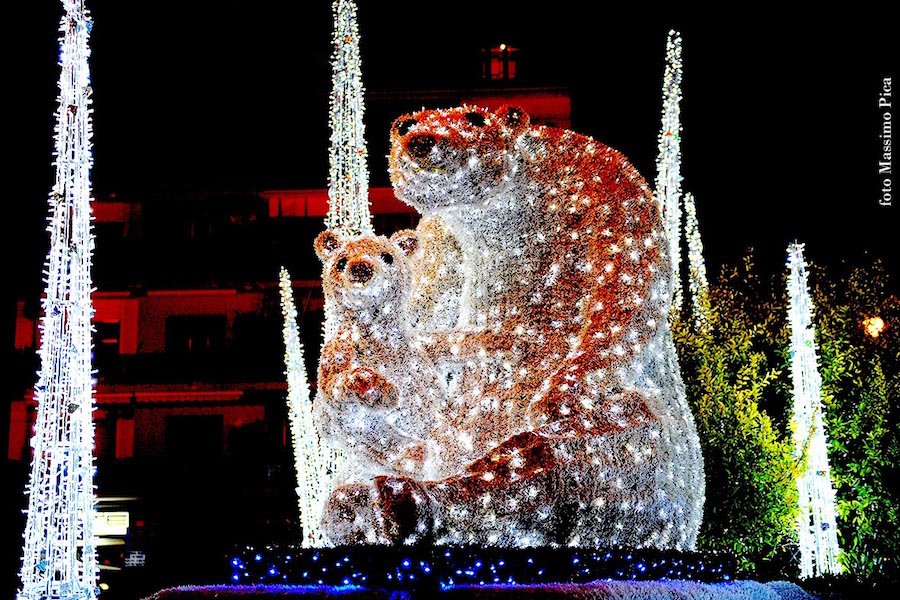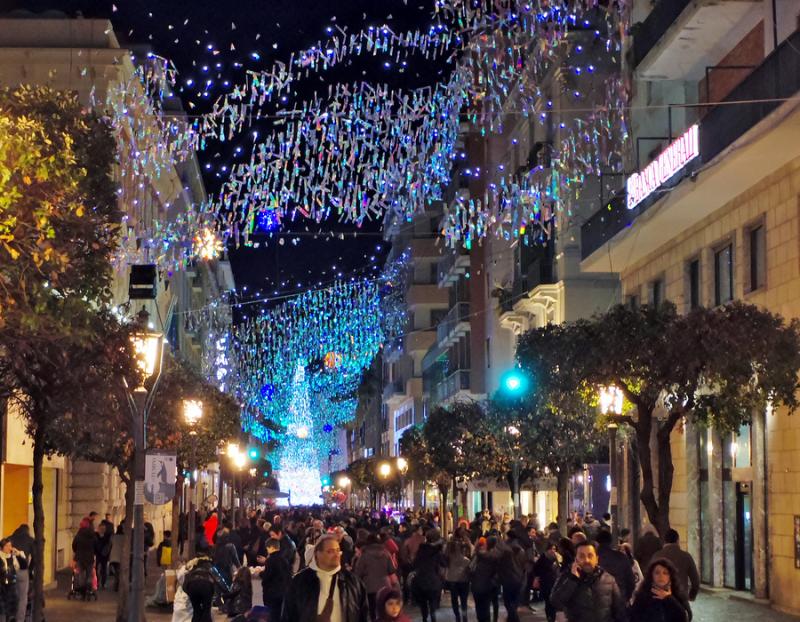Often overshadowed by the breathtaking splendor of Naples and by the enchanting beauty of the Amalfi coastline, Salerno is well worth a visit, too.
The second main center of the Campania region, the city has an ancient history and a bright present. A Roman colony, during Middle Age it also became an important cultural center thanks to the Duke Arechi II’s domination. The local Schola Medica Salernitana was considered the most important source of medical knowledge in Europe at the time and existed until 1799, when the city became part of the Parthenopean Republic under the Napoleonic rule and Joachim Murat ordered its closing.
Today Salerno, facing over the eponymous gulf in the Tyrrhenian Sea, is mainly a harbor city representing a key stopover both for tourism and trade.
Over the last decade, though, the cultural side of the city revived, especially thanks to an ambitious project of urban redesign appointed to famous international architects such as Santiago Calatrava, Zaha Hadid e Jean Nouvel, which was supposed to make the city a capital of contemporary design and liveability. Unfortunately not every planned project has been completed yet, and the seaport the designed by Hadid was only launched in April 2016, after the designer’s death.
Luci d’Artista: Christmas lightworks
Nevertheless, Salerno was able to confirm itself as a lively cultural center and as an interesting destination. This is specially true around Christmas time, when the city is literally glittering.
One of the most successful local initiatives indeed is the Christmas event Luci d’Artista; every year from November through January, it lights up streets and squares of the city center with colorful and imaginative light installations by famous light artists according to an annual theme. Some of them are original while some other have already been featured in Salerno or in Turin: the idea was born in 2006 from an “enlightened” twinning with the Northern Italy city, hosting the event bearing the same name since 1997.
A visit in Salerno after sunset is an appealing and evocative experience as the sparkling set-up gives a different vibe to walking around the city and visiting historical buildings, shopping for Christmas presents and tasting some local specialties such as a wood-fired pizza or a luxurious pasta dish.
 Photo by Massimo Pica
Photo by Massimo Pica
This year it is running from the 4th of November through the 22nd of January 2017. The Light Artworks follow four main themes spread around the city: the Myth, the Dream, the Time and Christmas. The first one includes Elena Borghi’s Mosaic (colored squares made of plastic bottles and aluminum) in via Canali, the evocative Eastern Atmospheres in piazza Sant’Agostino with many-colored lanterns and fans creating a spellbinding show, The Myth by Nello Ferrigno in via VI Settembre, referring to Homer’s tales, and the several light sculptures in piazza Vittorio Veneto.
 Photo by Massimo Pica
Photo by Massimo Pica
Dreamlike figures and fairytale atmospheres are to be found in The Enchanted Garden set up in the Villa Comunale (the city’s main park) or in the exotic world set under a brilliantly starred sky: an homage to The Thousand and One Nights which has been recreated in the beautiful, circle-shaped piazza Flavio Gioia whose side buildings have been “masked” by golden branches inspired to those of the Sheikh Zayed Grand Mosque in Abu Dhabi. Or even in the surreal scenery made by the white-lighted Magic Trees in via Roma. On the seafront, the Santa Teresa’s strand hosts Luca Pannoli’s Moonlight, a site-specific installation referring to sea, trees and to the moon, to which is dedicated a poem by Garcia Lorca, part of the installation. Not far from this, with Antarctica a bright and peaceful army of enlightened penguins invades the waterfront bringing joy and surprise. Part of the “Time” collection, it somehow matches with The Bear between ice, a tender and shining sculpture of a polar bear and her puppy in piazza Monsignore Grasso.
As Christmas approaches, more themed light-works will join, from the glittering Santa’s Sleigh in piazza Giancamillo Gloriosi to the religious scenes of The Nativity and The Annunciation by Eduardo Giannattasio, near the churches of San Pietro in Camerellis and Sacro Cuore.
Muri d’Autore: poetry and art on the walls
Salerno is not only “the city of light”, and it is not worth a trip only at Christmas. Getting there in the daylight and going beyond the elegant streets of the city center or the beautiful seashore, visitors can discover another aspect of the city and of its cultural history, deeply linked to the figure of Alfonso Gatto.
Born in Salerno in 1909 and died in Tuscany in a car accident, Gatto was one of Italy’s main – and most neglected – poets of the last century: his name is hardly mentioned in schoolbooks and his sorrowful and hermetic verses are shamefully little known even to Italians. A dissident communist and jailed for his anti-fascist activism, he had a wide list of different jobs, from journalism to teaching. Forced to leave Salerno for economic and personal reasons, he always had a love-hate relationship with his hometown, to which he dedicated many of his poems. His descendants decided to keep alive his memory founding the Alfonso Gatto Cultural Association, chaired by his nephew Filippo Trotta. Its aim is to promote events dedicated to the poet and to foster cultural relationship with Italian and foreign artists, making Salerno a cultural touchstone again.
One amongst the Association’s main achievements is the Muri d’Autore (Artist’s Walls) project, coordinated by the poet Valeriano Forte e by the artist Pino Roscigno, aka GreenPino. Muri d’Autore started in 2014 with a 3,000 euros budget, involving many young artists to turn one of the city’s humblest neighborhood – le Fornelle, where Gatto himself was born and raised – into an “open air book”.
Passing through the archway in via di Porta Catena, leading from the city center to the Fornelle borough, squares, staircases and buildings’ walls have been decorated with work of arts and verses. The latter one are mainly hailing from Gatto’s poems yet they are also by other famous authors with a very different background, from the poet Giuseppe Ungaretti to the popular Neapolitan songwriter Pino Daniele, as an homage to the working-class culture of the area.
Walking through the small streets, you can thus find the enigmatic and quiet face of Alfonso Gatto on many walls, accompanied by his verses dedicated to Salerno and to love and life. You will also find stencil images of women, imaginative animals’ portraits, mythological wall paintings – such as the Apollo’s head by Carlos Atoche, referring to an archeological finding by local fishermen in the Twenties –, geometric patterns or writing-only decoration, including the famous ode to o’ rraù (ragù, the intense Neapolitan tomato and meat sauce) by the dramatist Eduardo de Filippo. The whole staircase in via Velia has been turned into a suggestive murals by Alice Pasquini; a homage to Alfonso Gatto and to childhood, this was the first work of the project in 2014.

Though many of the paintings are signed by famous street-artists – while the lettering is almost entirely made by GreenPino – Muri d’Autore is not a street-art project. “This is not only street furniture and decoration, and it’s something different from street-art – Trotta says – Poetry is the real protagonist, and we believe it must be everyone’s heritage and within everyone's reach. This is a social innovation project, aiming to involve local people and to change the way they perceive the place where they live. And we also hope to let tourists come here, going beyond the Amalfi coastline or the evocative Positano staircases to discover a different side of this area. We want to establish a true Literary Park, extending the project also to other areas of the city”.
A group of volunteering student hold free, guided tours to the area – also in English and Spanish, small donations are welcome – and Muri d’Autore is an ongoing project, also open to collaborate with businesses and brands to foster innovation and social changes in disadvantaged areas.
WHERE TO EAT AND SLEEP IN SALERNO
Kriò Bar Gelateria
via Roma, 6,
Stop by for a good coffee or a delicious gelato and admire the shining piazza Flavio Gioia from the covered porch.
13 Salumeria
c.so Garibaldi, 214,
Half grocery, half restaurant. Enjoy the hearty local cuisine made with the best products in a contemporary setting.
Vaco ‘e Pressa
vicolo Barriera, 2 - piazza Portanova,
At only a few steps from the majestic and fascinating Christmas Tree part of Luci d’Artista, this is an authentic “no frills” pizzeria: wood fired pizzas of the Salerno kind (slightly different form the Neapolitan one) are served without cover and cutlery: use your hands to eat the slices and then leave the seat to the next costumer. The place’s name means “in a hurry”.
Villa Avenia
via Torquato Tasso, 83
A lovely villa in a quiet location yet not far from the city center, this is the ideal accommodation for a short visit to Salerno.









